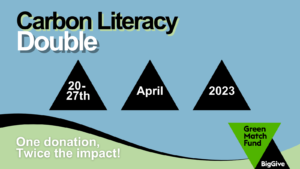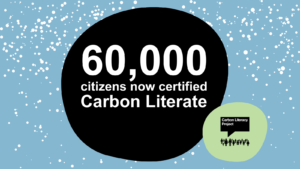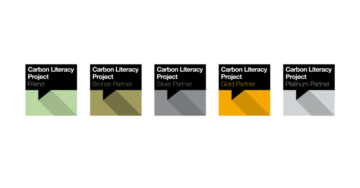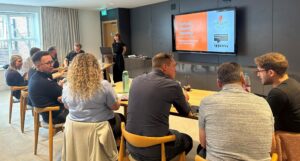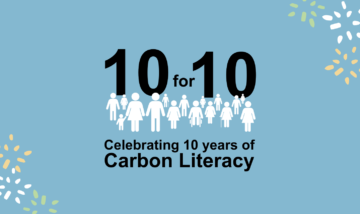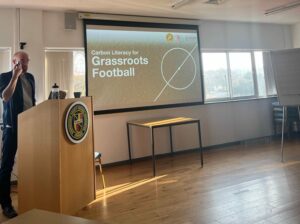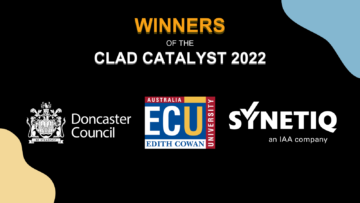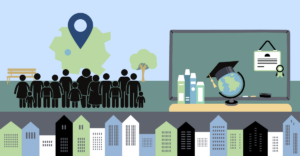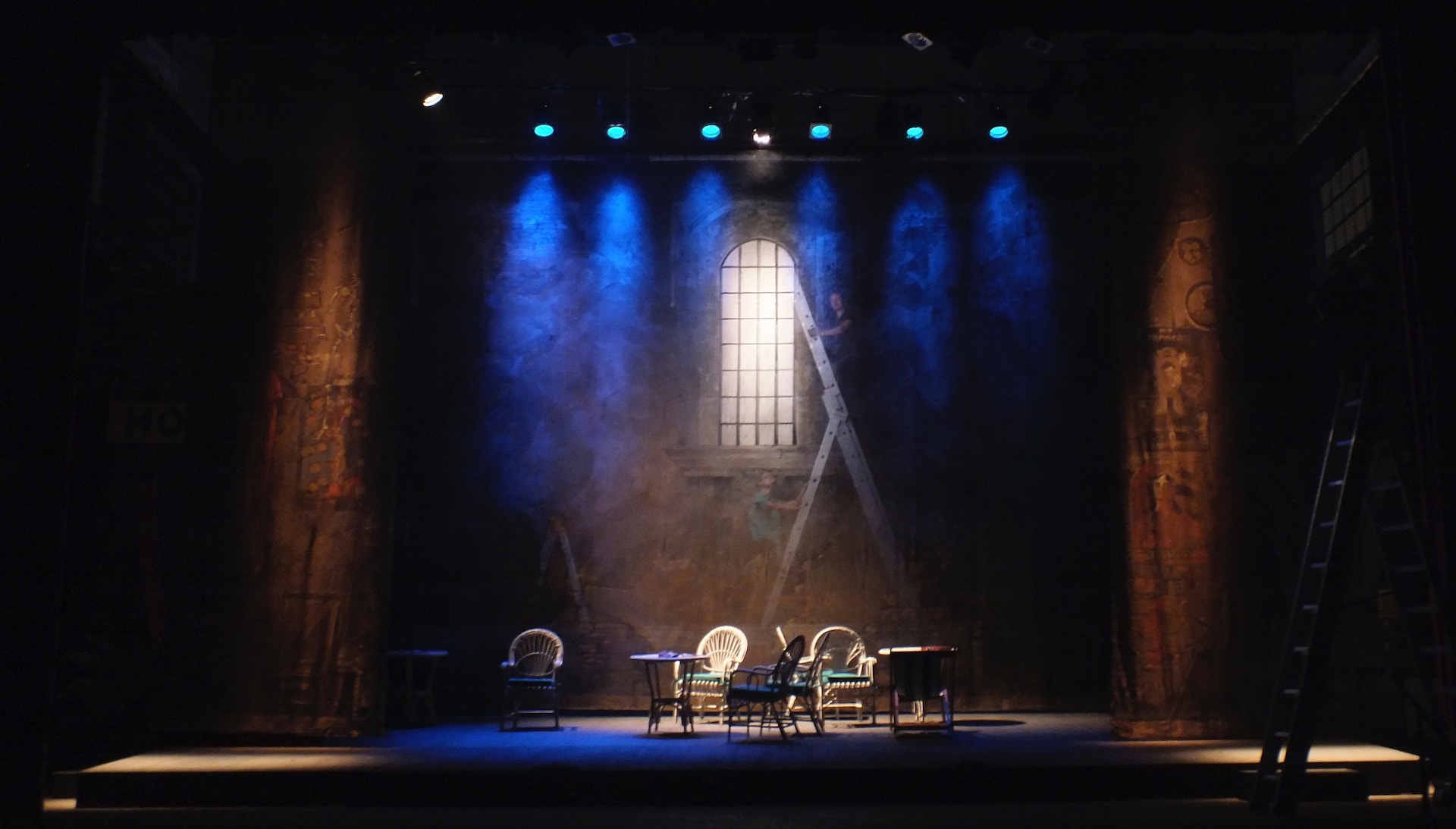
In Conversation with Jennifer Taillefer, Theatre-maker & Carbon Literacy trainer
Earlier this month, our Museums Coordinator, Jack, had the pleasure of speaking to Jennifer Taillefer about all things Carbon Literacy in the theatre sector. Jenn is a freelance theatre maker and Carbon Literacy trainer who recently won the ABTT Award for Environmental Sustainability for 2023 for her Carbon Literacy course – described by a number of attendees as “the best training that they have ever received”!
Hi Jennifer, can you introduce yourself and your work, and tell us how you started working in the environmental space?
I’m first and foremost a theatre-maker. I’m really interested in creating different kinds of shows – physical theatre shows, shows for young people. Shows are really my main driver, but the environmentalism and activism side has always been there as well, but much more in my personal sphere. I think with the rise of interest around this topic, there was just that moment where I realised “what I’m doing in my work is not reflective of how I choose to live”, so that became a really driving interest.
Theatre, at its heart, is a temporary thing. 99% of the time, we’re putting something on for three weeks or a month. That temporary nature requires us to be more intentional and more circular (with what we’re using). I remember having these moments when I was running an event for a week and then just putting it all in the skip, not because I wanted to, but because I didn’t have options.
While I was Production and Technical Director at the Unicorn Theatre, we developed what we called our Greening Production document in 2018. It was basically a list of parameters to follow if you were working with the Unicorn. It actually became contractual for them – quite a big deal! That then led to collaborating on the Theatre Green Book and starting to roll out Carbon Literacy training.
Why do you think it’s important for theatres to engage in climate action, both behind the scenes and on stage?
I’m not saying that every show we produce should be on the topic of climate change, but we do need to reflect the reality of the crisis we’re in – through the methods we use to create every show we produce. At the same time, though I really believe we need to do things better, improving the way we create shows is not going to save the planet.
What we do really well in the arts is storytelling – engaging our audience’s hearts and minds and presenting them with new ideas. There’s an amazing dramaturge named Zoë Svendsen who speaks about this (climate change) not being a topic, but a context. It’s the world in which we now function. What theatre has always done is explore the world we live in, hold a mirror up to it, and ask questions about how we do things and how we could do them differently. That’s what I think we need to continue to do.
It doesn’t make sense to do that with work that is created in an unsustainable way. So, for me, it’s less about theatre productions saving the planet and more about a sea change in our industry and society about how we assess materials, how we consider our impact, and how we question what we’re valuing and what we’re not.
You have experience in both writing and delivering a Carbon Literacy course. What benefit do you think Carbon Literacy can have?
The Theatre Green Book is a powerful tool – it speaks to really practical things. And there’s a level of context, and an understanding of where we’re at as a species and a planet, that we need people to have in the background. Often, I’ll go into training, and it seems like people are desperate for me to say, “Do this, not that”.
What I hope is that they leave the Carbon Literacy training with an understanding that it’s not quite that simple, and with an understanding of the larger concepts and parameters that make these very specific decisions easier. So, they can go into a production considering what they will do with materials at the end, considering the carbon and waste footprint, how things are made, and where things come from.
In such a fast-paced industry, it’s so rare and precious to have a day to sit and think and discuss a topic like this. So, we have to harness the power of that.
What is covered in your Carbon Literacy course?
The morning is very much about setting the scene. We look at the root causes (of climate change), the science, the economics, and the macro-movements that people are leading to address it at a global level. People can get stuck feeling like it’s all on the individual, so we look at the bigger picture. In the afternoon, we drill down into the practicalities of the Green Book – I pull things from each volume that are relevant to everyone, about our clothes, diet, and transport choices. And then, we have group discussions, which are partly about generating ideas and solutions, partly about sharing best practice, and sometimes venting about some of the challenges!
Two things can happen from this. If it’s training with multiple organisations present, there’s a wonderful sharing of ideas, and connections are made. The same thing can happen when multiple departments are in the room – you start making those connections between departments that don’t get to talk as regularly as we might like. What’s exciting is when you have different management levels in the room. I’ve had a few instances where an executive director is in a group discussion with an administrator or a stage doorkeeper, and that’s really exciting.
Do you have a favourite experience of delivering Carbon Literacy?
There are some organisations where the learners pledge their actions and earn their certificates, and the organisation doesn’t engage beyond that. But there are other organisations which, as part of the process, gather those pledges – and it’s fantastic because that means staff voices are being heard in a different way.
At times, I’ve seen a little bit of relief at the senior management level because they don’t have to come up with everything. When you actually ask the people who are doing the job how it could be done better, you get this suite of ideas and actions. So, coming back to organisations and hearing that the actions pledged as part of Carbon Literacy training are still going on 6, 8, 12 months later – that’s really exciting. That happens quite often when the gathering of pledges happens.
What’s next for you and your work, Carbon Literacy-related and otherwise?
On the Carbon Literacy front, I’m looking at finding some funding to take myself on a little ‘roadshow’. I’ve been travelling across the country doing this training, but it has all been for organisations and associations – that’s who’s got the capacity. I’d love to take it out on my own, supported by the organisations that have very generously offered space and support, to open this opportunity up to freelancers, other artists, technicians.
I’d also love to work with organisations on embedding this more – writing policies and procurement strategies and embedding the Green Book.
On the artistic front, I have a couple of shows that I’m developing that I’m excited about – and I definitely want to make them in the most sustainable way possible. I think there is still a myth in the industry that sustainable shows look like you’ve got a bunch of stuff from the tip and put it on stage – and it’s just not true. There are beautiful shows being made in very sustainable ways that are just as polished and professional as you would expect.
So, while the creative and artistic component of the shows I’m working on is super important to me, it’s also important that they are a model. I want to try and do something that looks just as gorgeous, just as scary, or whatever we are trying to express – in a sustainable way.
If you are interested in Carbon Literacy at your theatre or cultural organisation, contact us at museums@carbonliteracy.com.
- SEO Powered Content & PR Distribution. Get Amplified Today.
- PlatoData.Network Vertical Generative Ai. Empower Yourself. Access Here.
- PlatoAiStream. Web3 Intelligence. Knowledge Amplified. Access Here.
- PlatoESG. Automotive / EVs, Carbon, CleanTech, Energy, Environment, Solar, Waste Management. Access Here.
- BlockOffsets. Modernizing Environmental Offset Ownership. Access Here.
- Source: https://carbonliteracy.com/cl-in-conversation-theatre-maker/?utm_source=rss&utm_medium=rss&utm_campaign=cl-in-conversation-theatre-maker
- :has
- :is
- :not
- :where
- $UP
- 12
- 12 months
- 2018
- 2023
- 8
- a
- About
- across
- Action
- actions
- Activism
- actually
- address
- All
- also
- always
- amazing
- an
- and
- ARE
- around
- artistic
- Artists
- Arts
- AS
- assess
- associations
- At
- attendees
- award
- back
- background
- Basically
- BE
- beautiful
- became
- because
- been
- behind
- behind the scenes
- being
- believe
- benefit
- BEST
- Better
- between
- Beyond
- Big
- bigger
- Bit
- book
- both
- Bunch
- but
- by
- called
- CAN
- Can Get
- Capacity
- carbon
- causes
- certificates
- change
- choices
- Choose
- Climate
- climate action
- Climate change
- clothes
- collaborating
- COM
- come
- coming
- component
- concepts
- Connections
- Consider
- considering
- contact
- context
- continue
- contractual
- Conversation
- Coordinator
- could
- country
- Couple
- course
- covered
- create
- created
- Creating
- Creative
- crisis
- cultural
- day
- decisions
- definitely
- delivering
- departments
- described
- developed
- developing
- Diet
- different
- Director
- discuss
- discussion
- discussions
- do
- document
- Doesn’t
- doing
- done
- Dont
- down
- driver
- driving
- each
- earn
- easier
- Economics
- embedding
- end
- engage
- engaging
- environmental
- Ether (ETH)
- Event
- EVER
- Every
- everyone
- everything
- excited
- exciting
- executive
- Executive Director
- expect
- experience
- explore
- express
- fantastic
- fast-paced
- few
- finding
- First
- follow
- Footprint
- For
- foremost
- freelance
- from
- front
- function
- funding
- gather
- gathering
- generating
- get
- Global
- Go
- going
- Green
- Group
- had
- happen
- happens
- harness
- Have
- having
- heard
- hearing
- Heart
- her
- hold
- hope
- How
- HTTPS
- i
- I’LL
- ideas
- if
- Impact
- important
- improving
- in
- individual
- industry
- Intentional
- interest
- interested
- into
- introduce
- IT
- ITS
- jack
- Jennifer
- Job
- jpg
- just
- larger
- later
- leading
- Leave
- Led
- less
- Level
- levels
- like
- List
- literacy
- little
- live
- Look
- look like
- looking
- LOOKS
- love
- made
- Main
- make
- maker
- Making
- management
- materials
- max-width
- me
- means
- methods
- might
- minds
- mirror
- model
- moment
- Moments
- Month
- months
- more
- morning
- most
- much
- multiple
- my
- Named
- Nature
- Need
- New
- next
- now
- number
- of
- offered
- often
- on
- open
- Opportunity
- Options
- or
- organisation
- Organisations
- Other
- otherwise
- our
- out
- own
- parameters
- part
- People
- personal
- physical
- picture
- planet
- plato
- Plato Data Intelligence
- PlatoData
- pleasure
- Pledge
- policies
- possible
- power
- powerful
- Practical
- practice
- Precious
- present
- process
- procurement
- produce
- Production
- productions
- professional
- project
- put
- Putting
- question
- Questions
- RARE
- Reality
- really
- recently
- reflect
- regularly
- relevant
- relief
- remember
- requires
- Rise
- Roll
- Room
- root
- running
- same
- Save
- saving
- say
- saying
- scene
- scenes
- Science
- SEA
- sector
- seems
- seen
- senior
- sense
- setting
- sharing
- should
- show
- Shows
- side
- Simple
- sit
- So
- Society
- Solutions
- some
- something
- Space
- speaking
- Speaks
- specific
- Staff
- Stage
- start
- started
- Starting
- Still
- storytelling
- strategies
- such
- suite
- Super
- support
- Supported
- sustainable
- Take
- Talk
- Technical
- tell
- temporary
- that
- The
- the world
- theatre
- their
- Them
- then
- There.
- These
- they
- thing
- things
- think
- this
- those
- though?
- three
- Through
- time
- times
- tip
- to
- tool
- topic
- Training
- transport
- true
- try
- understanding
- unicorn
- unsustainable
- us
- use
- using
- valuing
- very
- VOICES
- volume
- want
- wanted
- was
- Waste
- Way..
- ways
- we
- week
- Weeks
- WELL
- were
- What
- whatever
- when
- which
- while
- WHO
- will
- with
- Won
- wonderful
- Work
- working
- world
- would
- writing
- you
- young
- Your
- yourself
- zephyrnet

